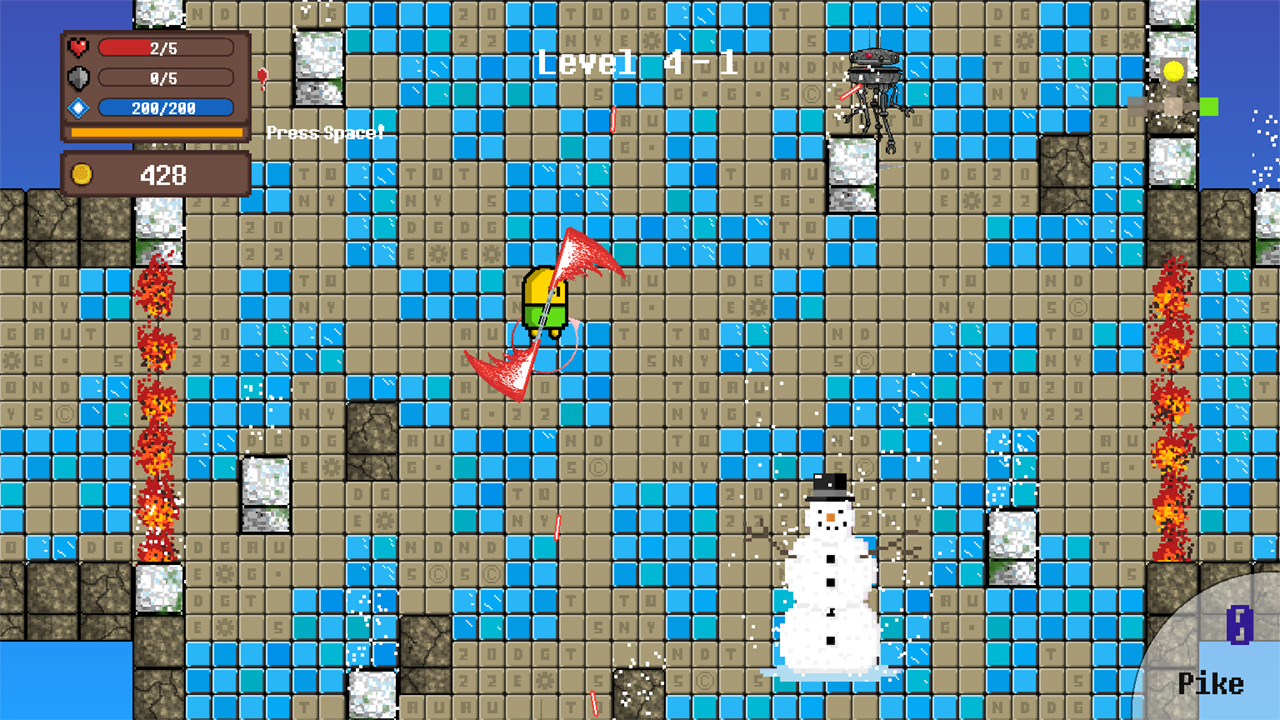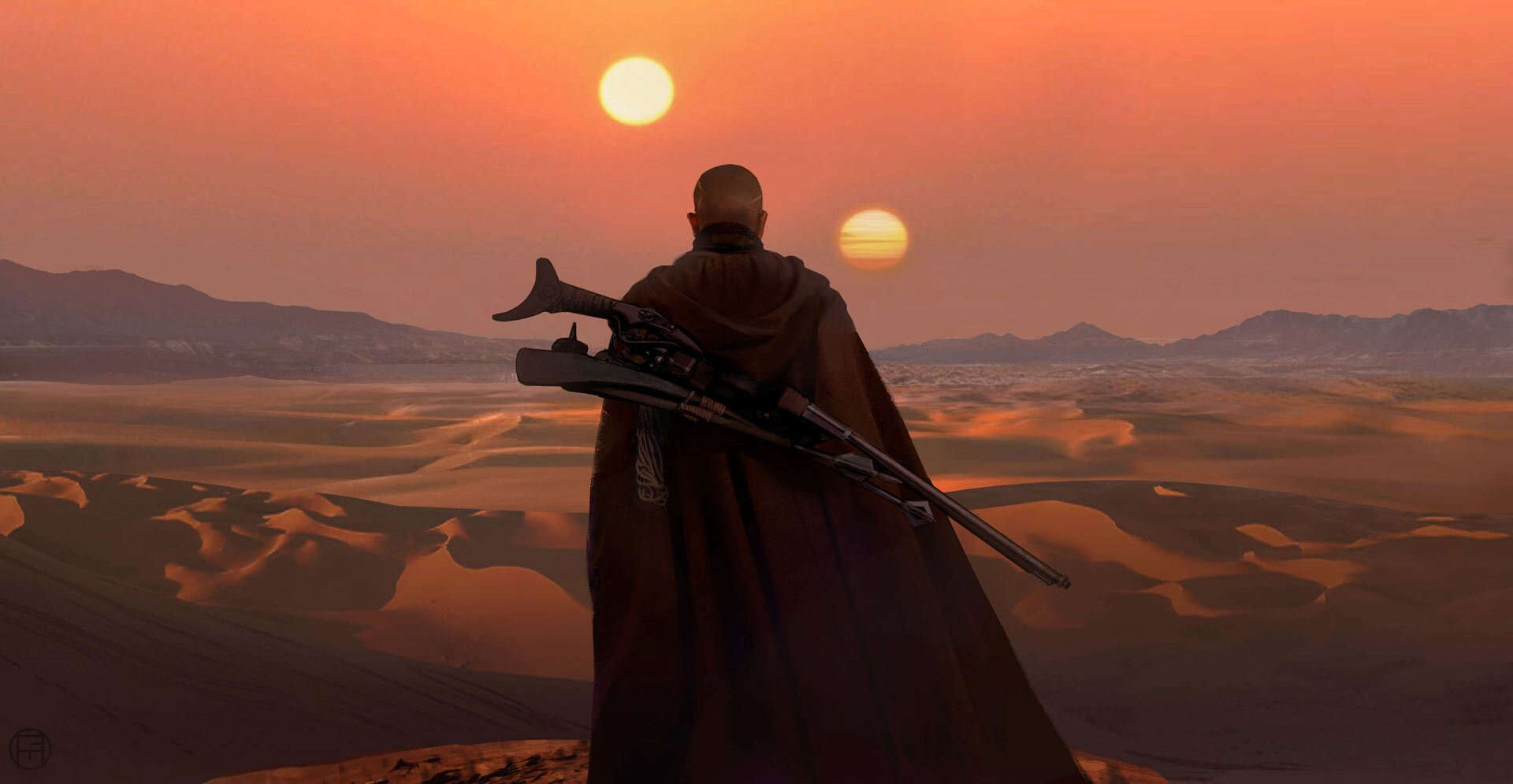Dungeon
Dungeon
Copyright © New Desire Studios 2022 - 2023
1. Project Introduction
Years ago, I quite like mobile game Soul Knight, and hoped to make a similar one. Recently, I happened to learn some basic design patterns, so I wish this could be my first practice. Before, I did make some games, but they were all small, and poor management can do the job. So this time, I’d also want to create a simple frame for game development, that is to say, a game engine, which could provide more flexibility and expansibility.
Visit Dungeon for more information!
Download
Links
Screenshots


2. Building Dungeon
There are three projects in this Visual Studio solution: Dungeon, Dungine and TinyXML2. TinyXML2 is a great XML parser so I use this to pack it into a static library. And Dungine is the so callled game engine. Just simply build the solution is OK. Dungeon is the start up project, and Release configuration will output the executable to Publish\ directory, while Debug configuration will output to Build\dist\Debug\. All macros for debug are disabled.
Since the resource files is mutable, and is mainly used for debug purpose during coding, I removed them from the source file folder.
If your want to compile and run it in IDE, please download the latest binary release file at either of these places.
Then, copy the
resfolder to the root directory of the game projectDungeon. (Which containsDungeon.vcxproj.)
Build Environment
- Windows 11 Pro
- Visual Studio 2022 Community
- EasyX 20220901
- FMOD 0.2.2.7
Notice that in EasyX 20220901, prefix for message changed from EM to EX. If you want to keep outdated features, please include <graphics.h> in your code.
3. How Does Dungeon Work
The game contains the game engine Dungine (Dungeon Engine) and the game Dungeon itself. It is developed with EasyX for graphics and FMOD for audio. Also, tinyxml2 as mentioned before.
3.1 Dungine
This is the game engine, including basic classes, encapsulations and a simple UI library. It was build with ECS pattern.
3.1.1 Game Object
The core of a game frame is to manage all objects. For common objects in game, including characters, weapons, bullets, etc., I used Factory Pattern and Prototype Pattern to create them, and Component Pattern to add properties and behaviors.
3.1.2 Scene
Scene manages all game objects. It maintains a object pool, just a pool, no reuse things. One important thing is that adding or removing objects during scene update should be postponed till update finishes.
3.1.3 Graphics and Audio
For graphics, the one and only thing to render is a Symbol, it includes position, layer, rotation angle, scale and alpha info, and is rendered in order of layer and position.
For audio, I used FMOD, and there are two types of sound. Effect, e.g. click and fire. The other is background music.
3.1.4 Resource Management
Well, the resource management is not advanced, I made it up without reference.
When the program starts, it reads all reference of resource in a XML file, and only load it when required. Then, like smart pointer, it will release it if reference count is zero. There are image, audio, and motion resource. Motion resource is sprite sheet for animation.
3.1.5 UI
In version 0.1.0, I was inspired by EasyUI. Now, with more consideration, I refactored that, and added more fancy features. However, the basic thing is still, a widget contains drawer and trigger.
All UI widgets are preferred to be loaded from external XML file, including both absolute and relative positioning, and can also adapt to screen size automatically. Besides, there are some animation effects available, like translation, scaling and alpha change. In version 1.1.0, I introduced animation drawer to support animation widget.
There is one problem that widgets with animation drawer could not be assigned scaling animation, since animation drawer scales itself to adapt to screen size.
Interface is the carrier of all events, and is managed by Application, the largest class of all, and the entrance of the program.
3.1.6 Trivia
Apart from primary objectives, it provides some other convenient tools, such as XML parse with TinyXML2, some vector calculations, Quadruple Tree, etc. And some base class for design pattern. Here, Factory Pattern is combined with Prototype to be a Library, so, just get what you want directly from a library.
3.2 Dungeon
Well, this part is the actual game logic based on Dungine. The main stuff it does is to concrete game procedure, terrain, objects, and interfaces.
3.2.1 Walkthrough
Dungeon is the core of the game, derived from Scene. It initialize resources, call terrain generation, and manage some special objects with special behaviors.
3.2.2 Terrain
Terrain is one of the most complicated part of the game. It use random Prim algorithm to generate a maze in a 3 * 3 graph. Then it implements the real map based on this plain graph, turning nodes into Arenas, and edges into Bridges.
Besides, it provides A* algorithm for path finding, and a blank area finding algorihtm.
3.2.3 Property and Behavior
All these are added by component. For example, there are RigidBodyComponent, ColliderBoxComponent for collision, MoveComponent for movement, and AnimComponent for rendering. For interaction and ‘AI’, there is BehaviorComponent, which really reduced dependency of objects.
3.2.4 Interface
Interface is where every event takes place, and each of them is an specific class. Interface layout is provided by XML file, but events has to be hooked by hard coding.
3.2.5 Flexibility
Most of the game data are loaded from external XML file, so you can easily modify the game without re-compile it. For example, change character properties, add new image or audio, even new character and weapon!
4. Epilogue
Almost all image were drawn by myself, some of them were collected from the internet, but made my own modification. In-game sound track comes from the game Undertale, the other were created by my mother.
I created every character and weapon with personal attachments, so it was never balanced, some weapons are extremely powerful, while others may be a little… weak.
Thanks for your playing!










